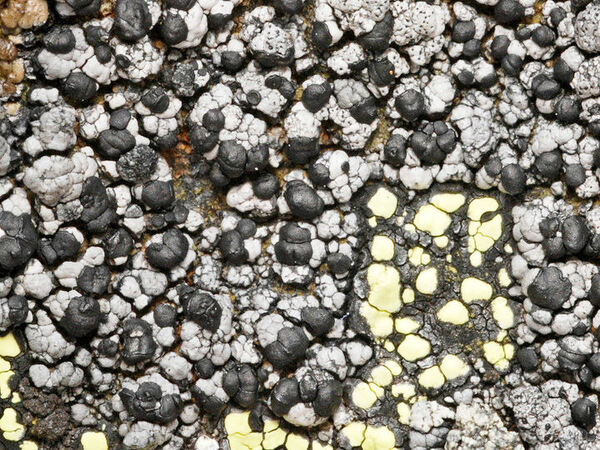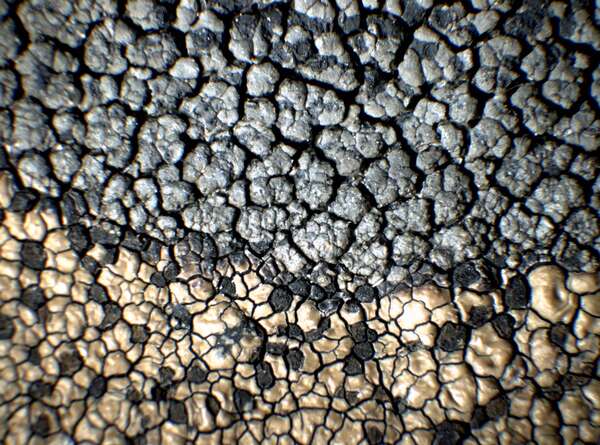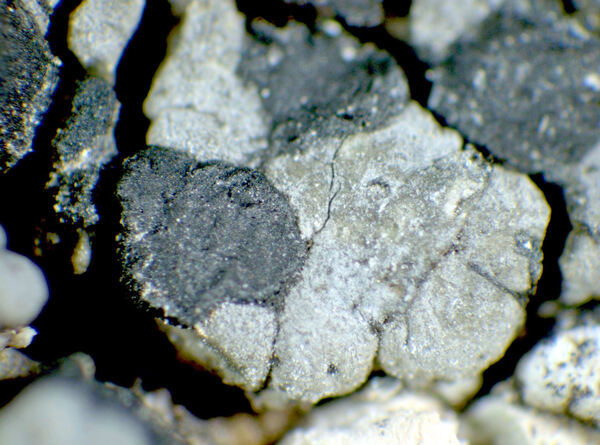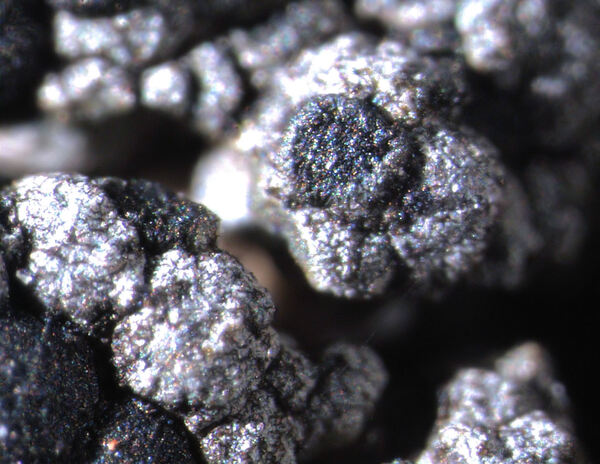Miriquidica subplumbea (Anzi) Cl. Roux
in Roux & al., Bull. Soc. linn. Provence, nr.spec. 14: 108, 2011. Basionym: Lecidea subplumbea Anzi - Atti Soc. Ital. Sci. Nat., 11: 169, 1868.
Synonyms: Lecidea inserena f. subplumbea (Anzi) Arnold; Lecidea inserena Nyl.; Lecidea tumidior (Nyl.) Vain.; Lecidella subplumbea (Anzi) Arnold; Miriquidica griseoatra auct.
Distribution: N - Frl (Tretiach & Hafellner 2000), TAA (Hertel & Schuhwerk 2010, Nascimbene & al. 2022), Lomb, Piem (Isocrono & al. 2004), VA (Piervittori & Isocrono 1997, 1999, Matteucci & al. 2015c).
Description: Thallus crustose, episubstratic, lead grey to dark grey, matt, areolate, usually rather thick, forming up to several cm wide patches, the areoles up to 1.5 mm wide, flat to slightly convex. Medulla white, I-. Apothecia lecideine, black, 0.5-1.2 mm across, subsessile, laterally attached to the areoles, with a flat to finally convex disc and a thin, finally excluded proper margin. Proper exciple blue-green to olive-brown in outer part, brownish to almost colourless within; epithecium olive-green to greenish brown, 10-15 µm high; hymenium colourless, 55-65 µm high. I+ blue; paraphyses mostly simple 1.5-2 µm thick at mid-level, the apical cells up to 4 µm wide; hypothecium colourless. Asci 8-spored, clavate, approaching the Lecanora-type, but with a weakly amyloid tholus, lacking an amyloid zone above the axial body and with a thin outer amyloid wall layer. Ascospores 1-celled, hyaline, ellipsoid, 10-13 x 5-6(-7) µm. Photobiont chlorococcoid. Spot tests: cortex and medulla K-, C-, KC-, P-. Chemistry: miriquidic acid.Note: a probably circumpolar, arctic-alpine species found on wind-exposed, acid siliceous rocks in the Alps, with optimum above treeline, sometimes starting the life-cycle on other crustose lichens. I have placed here all records of M. griseoatra; for further details see Hafellner & al. (2014).
Growth form: Crustose
Substrata: rocks
Photobiont: green algae other than Trentepohlia
Reproductive strategy: mainly sexual
Commonnes-rarity: (info)
Alpine belt: rather common
Subalpine belt: very rare
Oromediterranean belt: absent
Montane belt: absent
Submediterranean belt: absent
Padanian area: absent
Humid submediterranean belt: absent
Humid mediterranean belt: absent
Dry mediterranean belt: absent
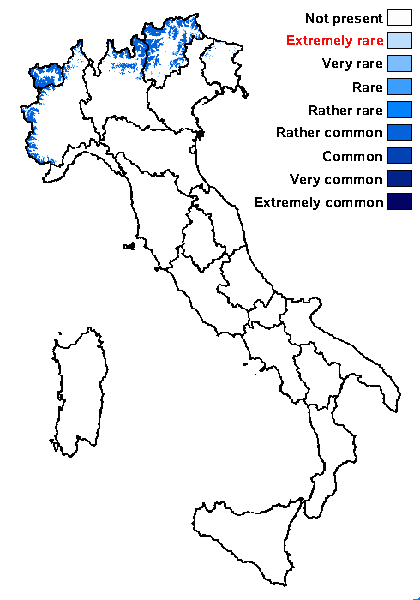
Predictive model
Herbarium samples
Growth form: Crustose
Substrata: rocks
Photobiont: green algae other than Trentepohlia
Reproductive strategy: mainly sexual
Commonnes-rarity: (info)
Alpine belt: rather common
Subalpine belt: very rare
Oromediterranean belt: absent
Montane belt: absent
Submediterranean belt: absent
Padanian area: absent
Humid submediterranean belt: absent
Humid mediterranean belt: absent
Dry mediterranean belt: absent

Predictive model
| Herbarium samples |
 INDEX FUNGORUM
INDEX FUNGORUM
 GBIF
GBIF
 DOLICHENS
DOLICHENS
